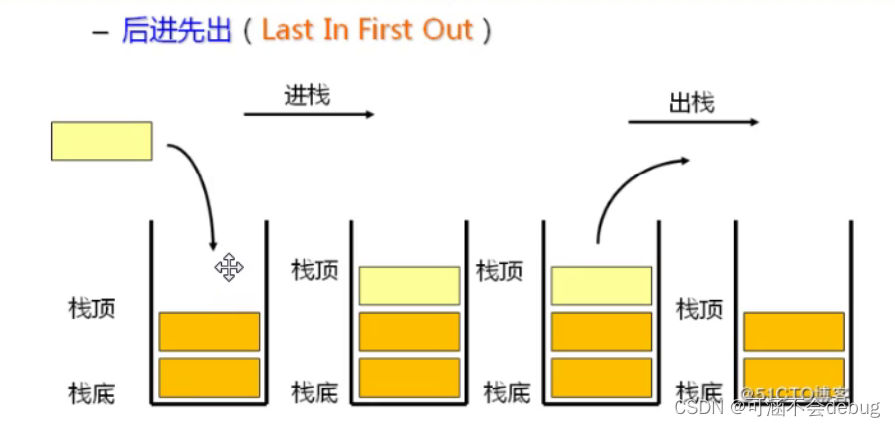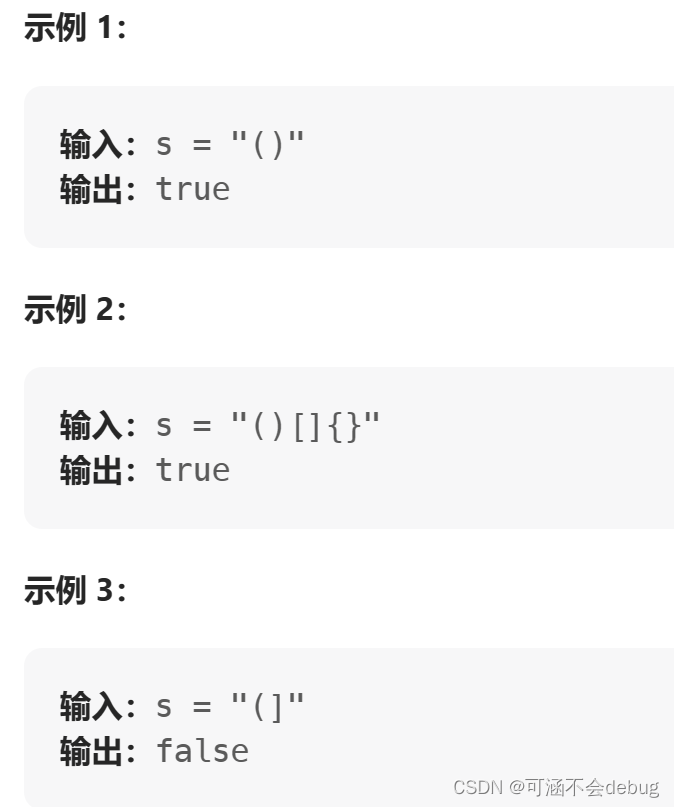目录
一、栈的概念及结构
栈:一种特殊的线性表,其只允许在固定的一端进行插入和删除元素操作。进行数据插入和删除操作的一端称为栈顶,另一端称为栈底。栈中的数据元素遵守后进先出的原则。
如同子弹夹,我们进行添子弹和出子弹,很形象。
压栈:栈的插入操作叫做进栈/压栈/入栈,入数据在栈顶。
出栈:栈的删除操作叫做出栈。出数据也在栈顶。

接下来,我们以数组栈的形式去模拟。
二、栈的头文件及基本框架
#pragma once
#include<stdio.h>
#include<stdlib.h>
#include<stdbool.h>
#include<assert.h>
typedef int STDataType;
typedef struct Stack
{
STDataType* a;//就是以a开头的一段连续的空间
int top;//定义栈顶位置
int capacity;
}ST;
void SLInit(ST* ps);
void SLDestroy(ST* ps);
void STPush(ST* ps, STDataType x);
void STPop(ST* ps);
int STSize(ST* ps);
bool STEmpty(ST* ps);
STDataType STTop(ST* ps);//获取栈顶元素
三、接口实现
1、对栈的初始化
void SLInit(ST* ps)
{
ST* ret = (ST*)malloc(4 * sizeof(ST));
if (ret == NULL)
{
perror(malloc);
exit(-1);
}
ps->a = ret;
ps->capacity = 4;
ps->top = 0;
}2、栈的销毁
void SLDestroy(ST* ps)
{
free(ps->a);
ps->a = NULL;
ps->capacity = 0;
ps->top = 0;
}
3、入栈操作
void STPush(ST* ps, STDataType x)
{
assert(ps != NULL);
//检查需不需要扩容
if (ps->top == ps->capacity)
{
ps->capacity += 4;
ST* ret = (ST*)realloc( ps->a, sizeof(ST) * ps->capacity);
if (ret == NULL)
{
perror(realloc);
exit(-1);
}
ps->a = ret;
}
ps->a[ps->top] = x;
ps->top++;
}4、出栈操作
void STPop(ST* ps)
{
assert(ps);
ps->top--;
}
5、判断栈是否为空
bool STEmpty(ST* ps)
{
assert(ps);
return ps->top == 0;
如果右边等式成立返回true,反之返回false
}6、返回栈顶元素
STDataType STTop(ST* ps)
{
assert(ps);
assert(ps->top > 0);
return ps->a[ps->top - 1];
}7、遍历栈
不同于其他数据结构,遍历栈不用print
//遍历栈的特殊方式
while (!STEmpty(&ps))
{
printf("%d ", STTop(&ps));
STPop(&ps);
}四、有效的括号 - 力扣(LeetCode)
题目描述:
给定一个只包括 '(',')','{','}','[',']' 的字符串 s ,判断字符串是否有效。
有效字符串需满足:
- 左括号必须用相同类型的右括号闭合。
- 左括号必须以正确的顺序闭合。
- 每个右括号都有一个对应的相同类型的左括号。

思路:
如果是左括号就入栈,如果是右括号就与栈顶元素进行比较。这样就正好匹配题目的要求,但博主目前没有学过STL库,所以只能将上面的手撕栈CV一下啦,下面的代码为了避免冗余去除掉这一部分~
代码:
bool isValid(char * s)
{
char* ret = s;
int num = 0;
//利用奇数偶数判断数量是否匹配
while(*ret)
{
num++;
ret++;
}
if(num%2 != 0)
{
return false;
}
ST ps;
SLInit(&ps);
while(*s)
{
switch(*s)
{
case '{':
case '[':
case '(':
STPush(&ps,*s);
break;
case ')':
case ']':
case '}':
if(STSize(&ps) == 0)
return false;
if(*s == ']' && STTop(&ps) != '['||
*s == ')' && STTop(&ps) != '('||
*s == '}' && STTop(&ps) != '{')
{
SLDestroy(&ps);
return false;
}
STPop(&ps);
break;
}
s++;
}
//防止((出现
if(!STEmpty(&ps))
return false;
return true;
}